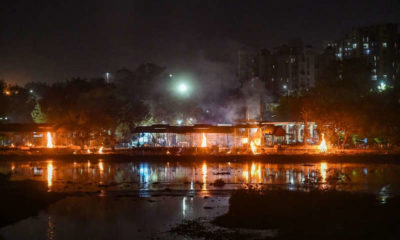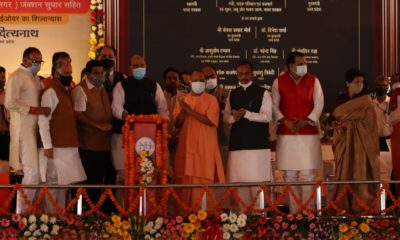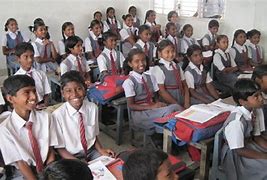Feature
Fresh earthquake kills 57 in Nepal, 10 in India

Kathmandu/New Delhi: At least 57 people were killed and over 1,000 others injured when a massive earthquake and 14 aftershocks shook Nepal on Tuesday causing panic in the Himalayan nation which is still recovering from the devastating April 25 temblor.
Ten people were killed in the states of Bihar and Uttar Pradesh in adjoining India.
Cracked buildings collapsed in a heap of debris and landslides cut off roads as an earthquake measuring 7.3 on the Richter scale hit Nepal, with its epicentre not far from Mount Everest — the world’s highest peak at 8,850 metres.
Nineteen people were killed in Dolakha, five in Sindhupalchok, four in Kathmandu, two in Sindhuli and one each in Lalitpur, Sunsari, Rauthat, Dhanusa and Sarlahi, Nepal home ministry spokesperson Laxmi Prasad Dhakal said.
The details of the other people killed were not immediately available.
Terrified people ran out of homes and offices to open spaces and parks as the buildings began to shake due to the tremors.
“It was frightening,” said a witness who clutched her daughter. “It felt worse than last time,” she added.
Six strong aftershocks followed in quick succession. Four of the aftershocks had their epicentre at Kodari on the Nepal-China border, northeast of Kathmandu, and the strongest aftershock measured 6.3 on the Richter scale.
Nepal Prime Minister Sushil Koirala said the government has deployed search, relief and rescue teams in the affected areas.
His Indian counterpart Narendra Modi assured that he has directed authorities to be on alert for rescue and relief operations.
A tweet from the Indian prime minister’s office said: “PM took stock of the situation following the fresh major earthquake felt in Nepal and parts of India, at a high-level meeting.”
India Meteorological Department chief L.S. Rathore said the aftershocks could well continue for a few more weeks and months.
In Kathmandu, a witness said he saw a building collapse.
Onlookers were left dazed and distraught on seeing the buildings collapse with a roar in a replay of the April 25 quake horror.
There was no electricity in Kathmandu after the tremors. Internet connectivity too snapped.
Thousands of people set up tents in open spaces. Some people were seen sitting on the middle of roads, afraid to go back to their homes.
Kathmandu airport was closed temporarily as the ATC staff hurried out of the tower. The airport — Nepal’s only international airport — was shortly thereafter reopened for normal traffic.
The tremors were felt across India for over 30 seconds, leaving at least eight people dead in Bihar and two in Uttar Pradesh. The National Disaster Response Force (NDRF) was put on alert for rescue and relief operations.
The quake shook Nepal, nearly three weeks after a more powerful temblor killed over 8,000 people in the Himalayan nation. The tremors were also felt in parts of northern and eastern India including Delhi, Patna, Lucknow, Guwahati, Bhubaneswar and Jaipur.
In Bihar, at least eight people, including three children, were killed.
A labourer was killed when an under-construction wall collapsed in Danapur near Patna. A child in Siwan district, two children in Manigachi in Darbhanga district and a woman in Dumra of Sitamarhi district died in similar circumstances.
One person each died in Hajipur in Vaishali district, Nawada and Saran districts.
Bihar Chief Minister Nitish Kumar, who directed officials concerned to assess the damage, however confirmed only six deaths, but said there was information on 15 and officers had been asked to verify these.
In Uttar Pradesh, two people were killed and half-a-dozen others injured.
A labourer was killed when an under-construction crematorium in Hamirpur collapsed while several other labourers were trapped in the rubble, while a girl was killed in Sambhal when her mud-and-thatch house caved in.
West Bengal Chief Minister Mamata Banerjee urged people to stay calm in the wake of tremors felt in several parts of the state, including Murshidabad, Durgapur, Siliguri.
She said a round-the-clock control room had been opened at the state secretariat ‘Nabanna’ in nearby Howrah. The numbers are 1070 and 22143526.
Kolkata Metro as well as Delhi Metro services were halted due to the tremors.
Entertainment
Meghalaya Reserves Legalized Gambling and Sports Betting for Tourists

The State Scores Extra High on Gaming-Friendly Industry Index
Meghalaya scored 92.85 out of 100 possible points in a Gaming Industry Index and proved to be India’s most gaming-friendly state following its recent profound legislation changes over the field allowing land-based and online gaming, including games of chance, under a licensing regime.
The index by the UK India Business Council (UKIBC) uses a scale of 0 to 100 to measure the level of legalisation on gambling and betting achieved by a state based on the scores over a set of seven different games – lottery, horse racing, betting on sports, poker, rummy, casino and fantasy sports
Starting from February last year, Meghalaya became the third state in India’s northeast to legalise gambling and betting after Sikkim and Nagaland. After consultations with the UKIBC, the state proceeded with the adoption of the Meghalaya Regulation of Gaming Act, 2021 and the nullification of the Meghalaya Prevention of Gambling Act, 1970. Subsequently in December, the Meghalaya Regulation of Gaming Rules, 2021 were notified and came into force.
All for the Tourists
The move to legalise and license various forms of offline and online betting and gambling in Meghalaya is aimed at boosting tourism and creating jobs, and altogether raising taxation revenues for the northeastern state. At the same time, the opportunities to bet and gamble legally will be reserved only for tourists and visitors.
“We came out with a Gaming Act and subsequently framed the Regulation of Gaming Rules, 2021. The government will accordingly issue licenses to operate games of skill and chance, both online and offline,” said James P. K. Sangma, Meghalaya State Law and Taxation Minister speaking in the capital city of Shillong. “But the legalized gambling and gaming will only be for tourists and not residents of Meghalaya,” he continued.
To be allowed to play, tourists and people visiting the state for work or business purposes will have to prove their non-resident status by presenting appropriate documents, in a process similar to a bank KYC (Know Your Customer) procedure.
Meghalaya Reaches Out to a Vast Market
With 140 millions of people in India estimated to bet regularly on sports, and a total of 370 million desi bettors around prominent sporting events, as per data from one of the latest reports by Esse N Videri, Meghalaya is set to reach out and take a piece of a vast market.
Estimates on the financial value of India’s sports betting market, combined across all types of offline channels and online sports and cricket predictions and betting platforms, speak about amounts between $130 and $150 billion (roughly between ₹9.7 and ₹11.5 lakh crore).
Andhra Pradesh, Telangana and Delhi are shown to deliver the highest number of bettors and Meghalaya can count on substantial tourists flow from their betting circles. The sports betting communities of Karnataka, Maharashtra, Uttar Pradesh and Haryana are also not to be underestimated.
Among the sports, cricket is most popular, registering 68 percent of the total bet count analyzed by Esse N Videri. Football takes second position with 11 percent of the bets, followed by betting on FIFA at 7 percent and on eCricket at 5 percent. The last position in the Top 5 of popular sports for betting in India is taken by tennis with 3 percent of the bet count.
Local Citizens will Still have Their Teer Betting
Meghalaya residents will still be permitted to participate in teer betting over arrow-shooting results. Teer is a traditional method of gambling, somewhat similar to a lottery draw, and held under the rules of the Meghalaya Regulation of the Game of Arrow Shooting and the Sale of Teer Tickets Act, 2018.
Teer includes bettors wagering on the number of arrows that reach the target which is placed about 50 meters away from a team of 20 archers positioned in a semicircle.
The archers shoot volleys of arrows at the target for ten minutes, and players place their bets choosing a number between 0 and 99 trying to guess the last two digits of the number of arrows that successfully pierce the target.
If, for example, the number of hits is 256, anyone who has bet on 56 wins an amount eight times bigger than their wager.























